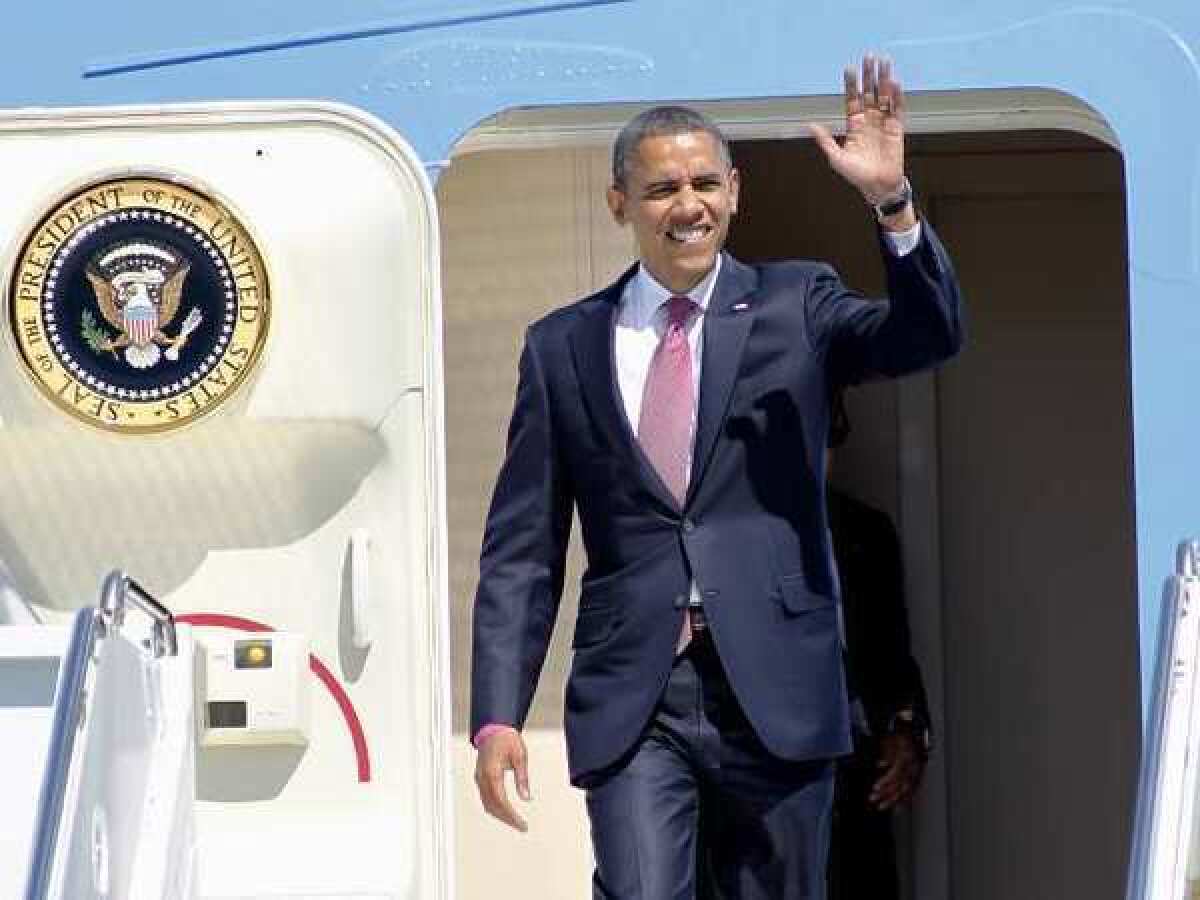L.A. Times endorses Obama -- does that show a bias?

On Sunday, the Los Angeles Times’ editorial board endorsed President Obama for reelection.
Not surprisingly, the action has drawn hundreds of comments from readers who agreed or disagreed with the endorsement.
But a third group of readers questioned the very idea of an endorsement. And many thought that the Obama recommendation indicated a bias in news coverage.
Elizabeth Denny of Orange was one such reader. “I do not subscribe to the L.A. Times to hear about your political point of view,” she emailed. “I want the news to be nonpartisan, and I want to read about the facts, not about a person’s or a corporation’s viewpoints or political preferences.”
On Twitter, Mark Silkwood wrote: “@latimes has officially endorsed Barack Obama. Wow. What happened to telling the news, not picking sides.”
And on Facebook, Raymond Charpentier told The Times: “Newspapers and media outlets shouldn’t back anyone. Be neutral.’
Some of these readers are confusing the editorial board with the newsroom; the two are separate, and the editorial board’s views do not influence news articles. (See more about the editorial board and its mission.)
Editorial Page Editor Nicholas Goldberg explained: “When the Los Angeles Times covers the news, it tries to do so in as objective and unbiased a manner as possible. Reporters are expected to present both sides of every argument but to withhold judgments about which side is right and which side is wrong. Readers are to be presented with the facts but should be left to draw their own conclusions.”
“But the editorial page is different,” Goldberg said. “Not only is opinion allowed -- it’s expected. For as long as anyone can remember, the editorial page has expressed the views and judgments of the newspaper.
“Today, our editorials are written by a staff of eight editorial writers, each of whom has expertise in a number of issue areas. I am the editor of the page. We gather three mornings a week to discuss the news and what we should opine on. We meet regularly with public officials. We reach our positions through reporting, discussion and, where possible, consensus. The publisher of the paper can get involved when he wants. The people who work for the news sections of the paper do not get involved in decisions about editorials.”
The presidential endorsement is a part of newspaper history, and it is a tradition carried out by the majority of large publications. For the 2008 presidential election, 92 of the top 100 newspapers by circulation made an endorsement, according to the American Presidency Project at UC Santa Barbara.
The Times is the first paper in the top 10 to make an endorsement this year. However, the nation’s two largest-circulation newspapers, USA Today and the Wall Street Journal, generally do not endorse candidates.
The Los Angeles Times made its first presidential endorsement in 1884, for Republican James G. Blaine, in a column headlined “Six reasons why Blaine will be triumphantly elected.” (Blaine was defeated in the election by Democrat Grover Cleveland.)
The Times then regularly made presidential recommendations – all Republican – through the 1972 election. However that endorsement, for Richard M. Nixon, was the Times’ last presidential endorsement for 36 years.
Jim Newton, The Times’ editor-at-large, said the Nixon endorsement was one that then-Publisher Otis Chandler came to regret amid the Watergate scandal. At the time, Chandler wanted to break “the connection to the Republican Party” that had dominated the paper’s editorial voice, Newton said.
The Times resumed presidential endorsements in 2008 in time for the primary election. Newton, who was editor of the editorial pages at the time, explained in a 2008 article: “The whole idea of editorial writing is that it’s good for society in general to have a civil discourse about these issues,” he said.
The Times also endorsed Obama in the 2008 general election – its first endorsement of a Democrat for the presidency.
Goldberg said endorsements, for political candidates or ballot measures “are an especially important part of what we do.”
“We spend an enormous amount of time listening to the arguments on both sides of every race in which we endorse, studying the issues, reporting the facts and arguing our positions in our meetings,” he said.
The board doesn’t endorse in every race because there are too many, Goldberg said. “But we generally endorse in the most high-profile races -- for president and U.S. Senate, for instance -- and in the least-publicized ones” such as state and city ballot measures, and local judicial races.
“Not everyone agrees with our opinions,” Goldberg acknowledged, “nor do they have to in order to enjoy and benefit from The Times.
“I hope, though, that the editorials are sufficiently well thought out and intellectually honest and free from empty rhetoric and cant that readers will consider them and, from time to time, be persuaded by them.”
A sampling of reader comments about the Obama endorsement follows and was compiled by Xiaonan Wang, an intern in The Times’ Washington Bureau:
readers.representative@latimes.com
Follow the Readers’ Rep on Twitter and Google+
